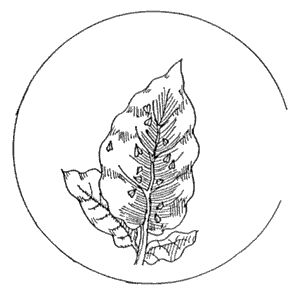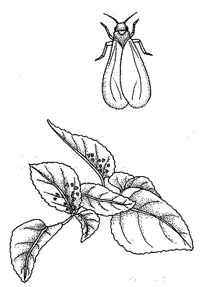 |
Identifying Whiteflies
Whiteflies are closely related to other serious plant pests such as mealybugs and scale. Adult whiteflies look like tiny white moths. They’re covered with a white powdery substance. When an infested plant is shaken, the startled insects look like flying dandruff. Whiteflies are often brought into the home and the yard on infested bedding plants or other nursery material.
Immature nymphs and adults suck juices from plant leaves, buds, and stems, weakening the plants. As they feed they excrete honeydew, a sweetish fluid that clogs plant surfaces and encourages the growth of unsightly black sooty molds. Whiteflies are found throughout the United States. Many generations occur in a year.
 |
Many species of whiteflies attack a wide range of plants, shrubs, and trees. The most familiar species, the greenhouse whitefly (Trialeurodes vaporariorum), is a major pest of indoor plants as well as garden vegetables and flowers. Another species, the sweetpotato whitefly (Bemisia tabaci), has become a serious pest of lettuce, melons, cantaloupes, carrots, cucumbers, squash, and other crops. It also transmits several plant viruses and, worst of all, is resistant to chemical or biological controls.
Their Growth Stages
Whiteflies begin life as minute, virtually invisible eggs arranged in a semicircle on the undersides of leaves. The eggs hatch into the crawler stage of the insect. Once the active crawlers settle down to feed they molt and become nymphs. The nymphs stay in one place on the plant. They are light green, oval and flat, and are fringed with short, white, waxy filaments. Pupae develop from the nymphs and look similar, but have a few waxy filaments on their back.
Adults emerge from the pupae, and in about 4 days begin laying eggs. All stages of development may occur at the same time on the plant. The entire life cycle takes about a month. Whiteflies cannot overwinter outdoors in cool latitudes, but can continue from year to year in greenhouses. They thrive outdoors all year long in warmer areas such as Florida, south Texas, and the Southwest.

